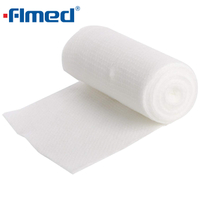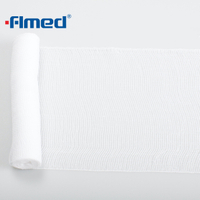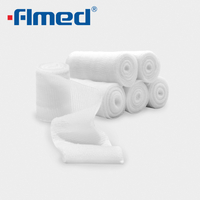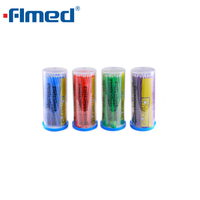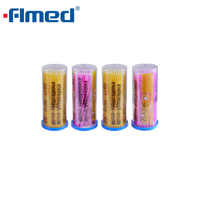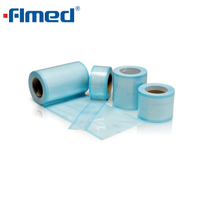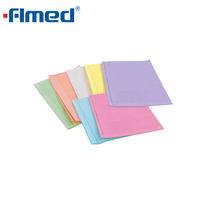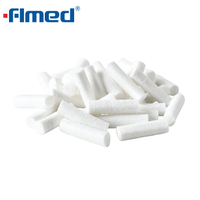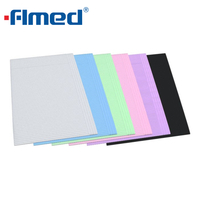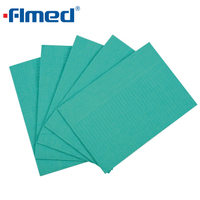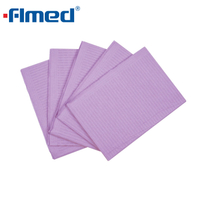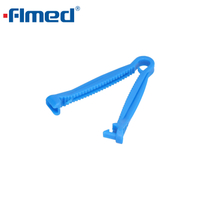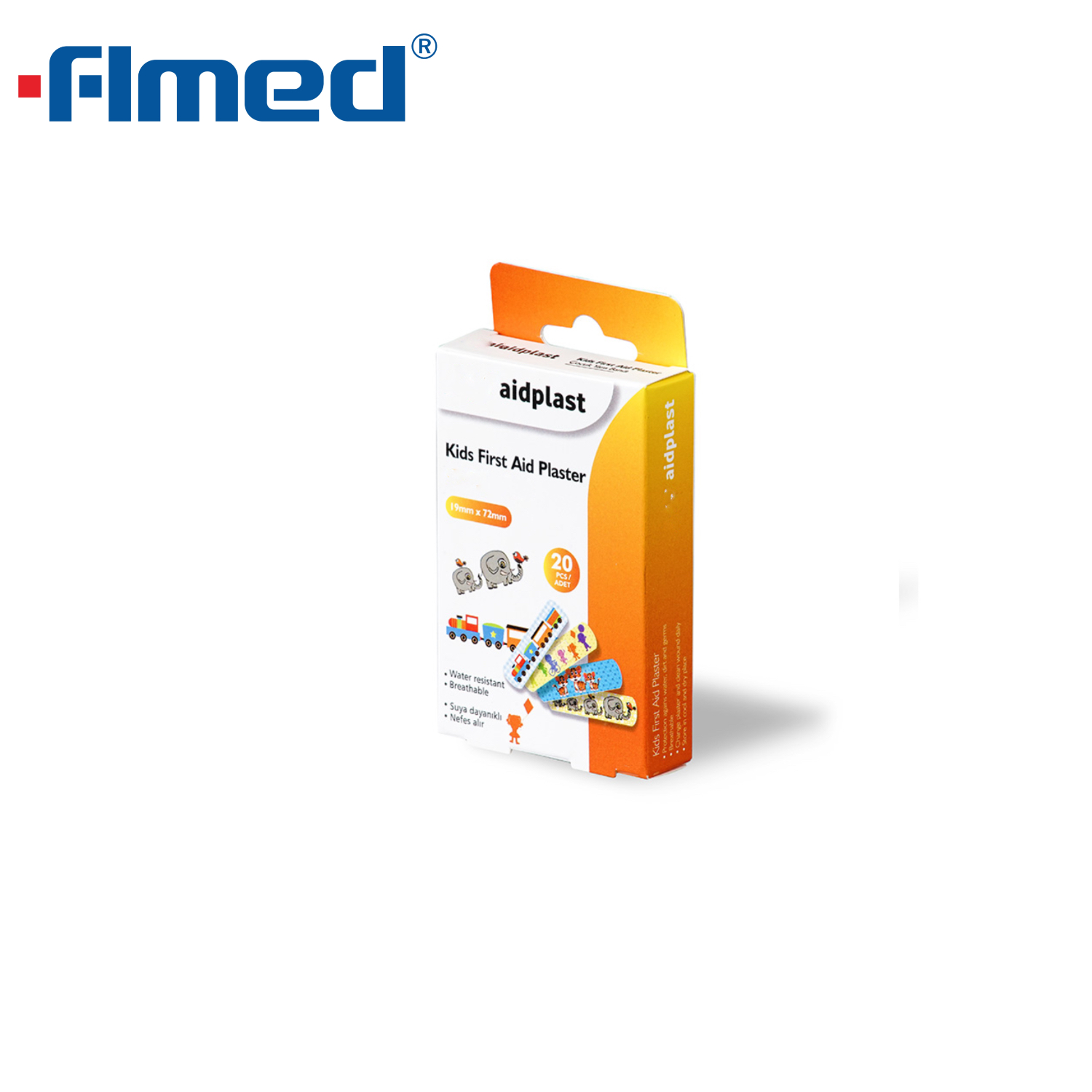
When it comes to wound protection, first aid plasters have long been recognized as a convenient and reliable solution. In this article, we will explore the various benefits of using first aid plasters, discuss how to choose the right type for your needs, and provide guidelines for their proper application. Whether you're dealing with a small cut or a more significant injury, understanding the advantages and best practices of first aid plasters can make a significant difference in promoting quick healing and preventing further damage. So, let's dive in and discover everything you need to know about first aid plasters and how they can effectively safeguard your wounds.
Benefits of First Aid Plasters
First aid plasters, also known as adhesive bandages, are an essential item in any first aid kit. These small, adhesive strips are designed to cover and protect minor cuts, scrapes, and wounds. They offer several benefits that make them a must-have for both home and professional use.
One of the primary benefits of first aid plasters is their ability to promote wound healing. When applied to a cut or scrape, the plaster creates a barrier that prevents dirt, bacteria, and other harmful particles from entering the wound. This protection helps reduce the risk of infection, allowing the body's natural healing process to take place more effectively.
In addition to providing a protective barrier, first aid plasters also create an optimal environment for wound healing. Some plasters are infused with ingredients such as antibacterial agents, which further aid in preventing infection. Others are designed to be breathable, allowing air to reach the wound and promote faster healing. This combination of protection and optimal healing conditions makes first aid plasters an essential tool in the initial treatment of minor injuries.
Another benefit of first aid plasters is their versatility. They come in various shapes and sizes to suit different types of wounds. Whether it's a small scrape on the knee or a deeper cut on the finger, there is a plaster available to provide the right level of coverage and protection. Some plasters are even designed specifically for certain body parts, such as fingertip plasters or knuckle plasters, ensuring a secure fit and maximum comfort.
Furthermore, first aid plasters are easy to use and convenient. They can be quickly applied to a wound without the need for additional tools or equipment. The adhesive backing ensures that the plaster stays in place, even during activities that may cause movement or friction. This convenience makes them ideal for on-the-go situations, such as outdoor activities or travel, where immediate wound care is necessary.
How to Choose the Right First Aid Plasters
First aid plasters are an essential item to have in any home or workplace first aid kit. When it comes to choosing the right first aid plasters, there are several factors to consider to ensure their effectiveness in providing immediate relief and promoting quick healing.
First and foremost, it is important to consider the size and shape of the first aid plaster. The plaster should be large enough to cover the entire wound but not so large that it becomes uncomfortable or restricts movement. Additionally, the shape of the plaster should be suitable for the specific area of the body where it will be applied. For example, a finger-shaped plaster would be ideal for cuts or wounds on the fingers.
Another crucial factor to consider is the adhesive quality of the first aid plaster. The adhesive should be strong enough to securely hold the plaster in place, even in situations where there may be moisture or movement. However, it should also be gentle enough to be removed without causing further pain or damage to the wound.
In addition to adhesive quality, the material of the first aid plaster is also important. Plasters made from breathable materials, such as fabric or hypoallergenic adhesive, allow air to circulate around the wound, promoting faster healing. It is also essential to ensure that the plaster is latex-free to prevent any potential allergic reactions.
When choosing the right first aid plaster, it is essential to consider the type of wound or injury it will be used for. Plasters come in various forms, including waterproof, antimicrobial, and extra-absorbent options. Waterproof plasters are ideal for wounds that may come into contact with water, such as during showering or swimming. Antimicrobial plasters help prevent infections by inhibiting the growth of bacteria on the wound. Extra-absorbent plasters are designed for wounds that have heavy bleeding or exudate.
Lastly, it is important to consider the ease of use and accessibility of the first aid plaster. Plasters that are individually wrapped and easy to open are convenient for quick and hygienic application. Additionally, having a variety of sizes and shapes readily available ensures that the right plaster can be chosen for any type of wound or injury.
Proper Application of First Aid Plasters
First aid plasters are essential in any first aid kit as they play a crucial role in providing immediate care for minor injuries. Whether it's a cut, scrape, or a small burn, having the proper application of first aid plasters is vital to promote quick healing and prevent infection.
When it comes to using first aid plasters, there are a few important steps to follow. First and foremost, it is crucial to clean the wound thoroughly before applying the plaster. This can be done by gently washing the area with mild soap and water, ensuring that any dirt or debris is removed. Once the wound is clean, it should be dried gently with a clean towel or sterile gauze.
Next, it is important to select the right size and type of first aid plaster for the injury. Plasters come in various shapes and sizes to accommodate different wounds, so it's essential to choose one that will adequately cover and protect the affected area. Additionally, waterproof plasters are available for wounds that may come into contact with water, ensuring that the dressing remains intact.
To apply the plaster, start by removing the protective backing while being careful not to touch the adhesive side. Carefully place the plaster over the wound, ensuring that it fully covers the injured area. Press down gently to ensure proper adhesion, making sure there are no wrinkles or air bubbles trapped underneath. It is important to note that the plaster should be applied firmly enough to stay in place but not too tight to restrict blood circulation.
First aid plasters should be changed regularly to promote proper wound healing. Depending on the type of injury, plasters may need to be changed daily or as directed by a healthcare professional. When removing the plaster, it is essential to do so gently to avoid causing further irritation to the wound. If the plaster sticks, it can be moistened with water to help with removal.
Conclusion
The article highlights the benefits and importance of first aid plasters in treating minor cuts, scrapes, and wounds. It emphasizes that first aid plasters provide a protective barrier, promote wound healing, offer versatility in size and shape, and are easy to use. The article suggests that having a well-stocked first aid kit with a range of plasters is essential for effective wound care. It also emphasizes the importance of considering factors such as size, shape, adhesive quality, material, and type of wound when choosing the right plasters. The article concludes by mentioning that proper application of first aid plasters, including cleaning and protecting wounds, can lead to quick healing and prevent infection. Overall, the article emphasizes the significance of having first aid plasters readily available and knowing how to use them correctly in treating minor injuries.

 English
English
